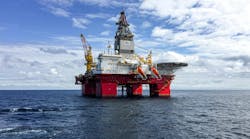Offshore staff
EDINBURGH, UK – Upstream operators have cut $910 billion from planned global capex during 2015-2020, according to Wood Mackenzie.
However, the analyst’s global costs survey suggests that next year, savings will be materially lower than in 2016-17.
Savings in opex have largely come from cuts in labor and services, streamlining operations and lower logistics charges.
One beneficiary of these initiatives has been Europe, where opex is down by 25% compared with 2014, helped by efficiency improvements and higher production.
However, in Asia/Pacific, South America and parts of Sub-Saharan Africa, unit opex appears to be rising due to a lower cost base, local content requirements, and increasing need for enhanced oil recovery at mature assets.
Globally, Wood Mackenzie expects operating costs to start increasing from 2018, but to remain 5-10% below 2014 levels in 2020.
Principal upstream analysts Jessica Brewer said there are three factors that could be game-changers for the industry: lean thinking; supply chain consolidation and collaboration; and digitalization.
"For now, structural cost savings are an aspiration more than a reality,” she said. “The ultimate proof will come when cyclical drivers weaken, revealing the reshaped industry and supply chain they have left behind.”
12/15/2017




